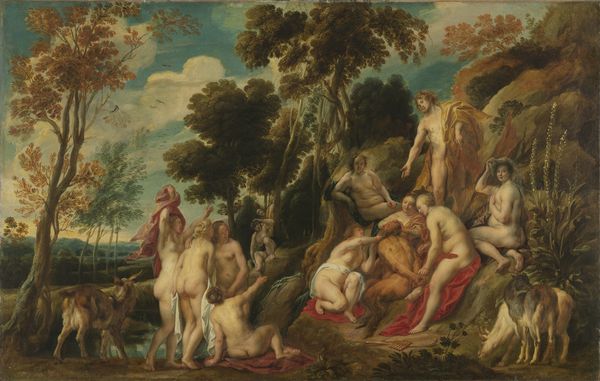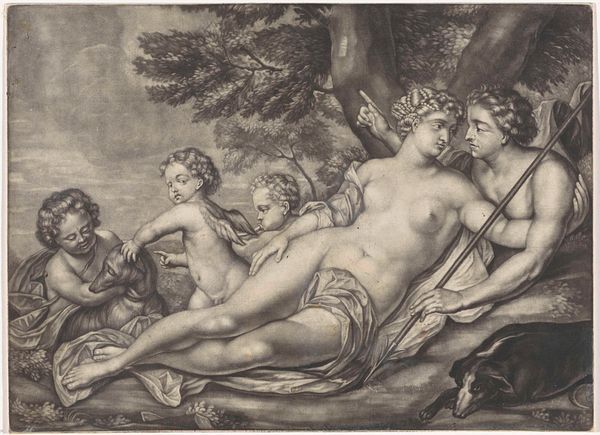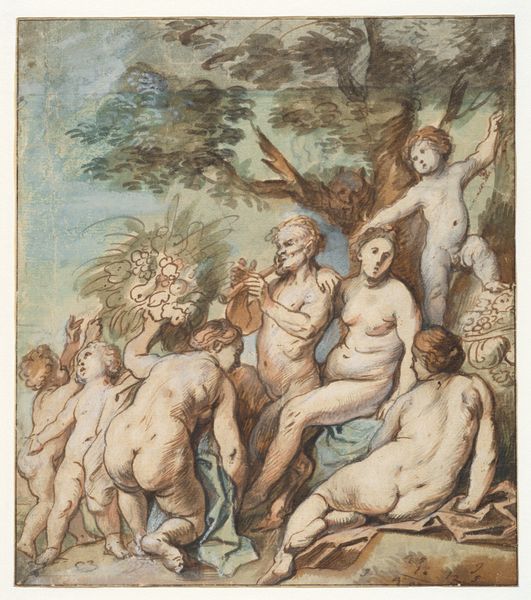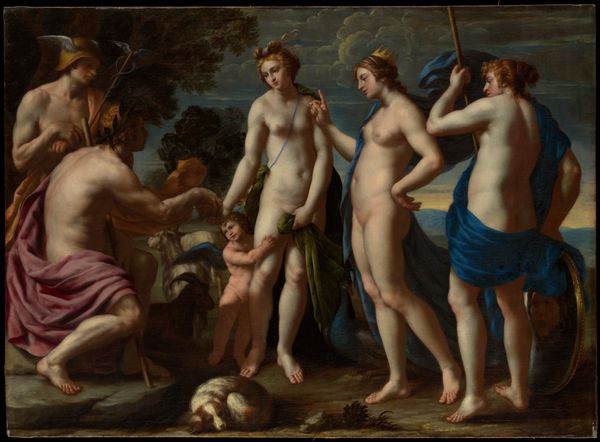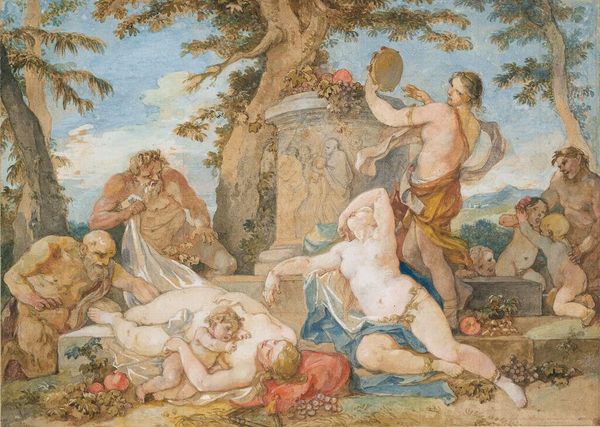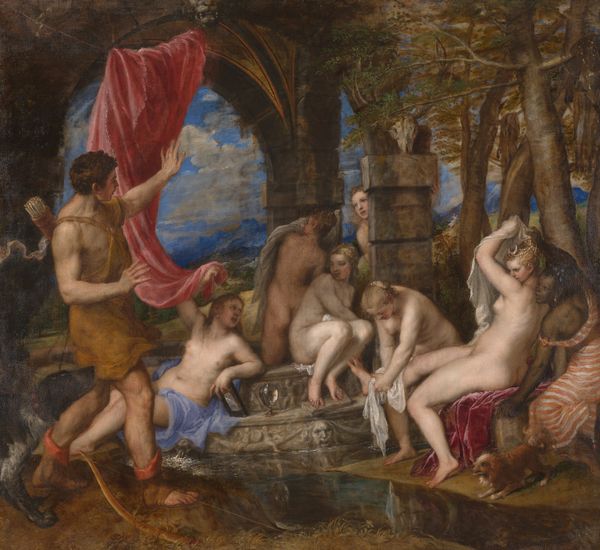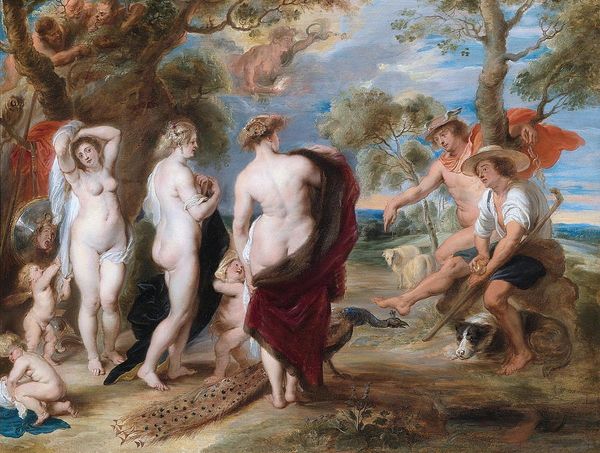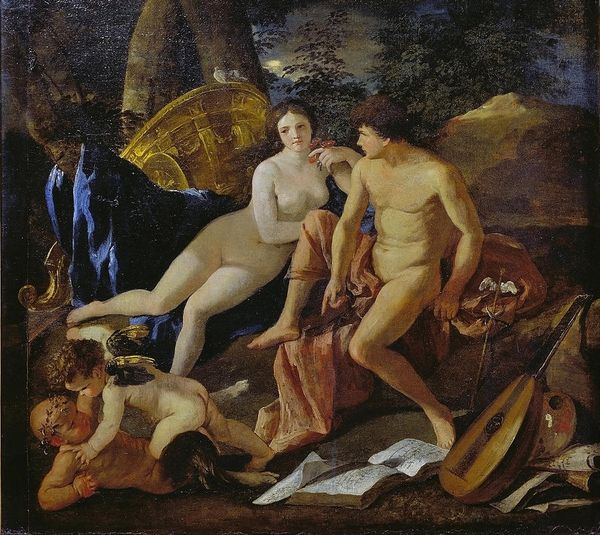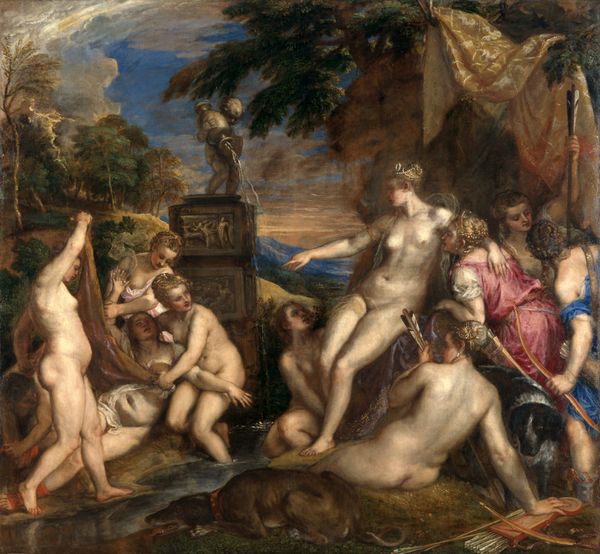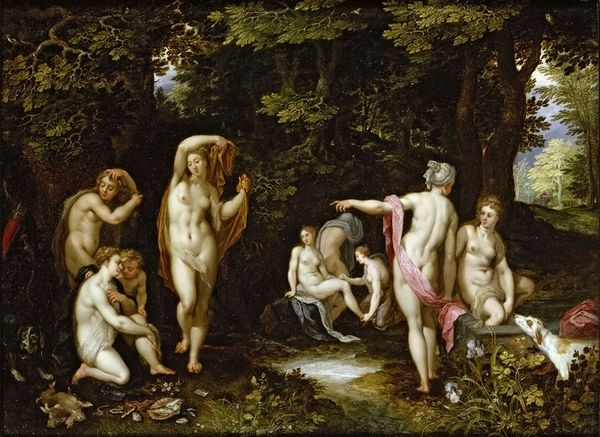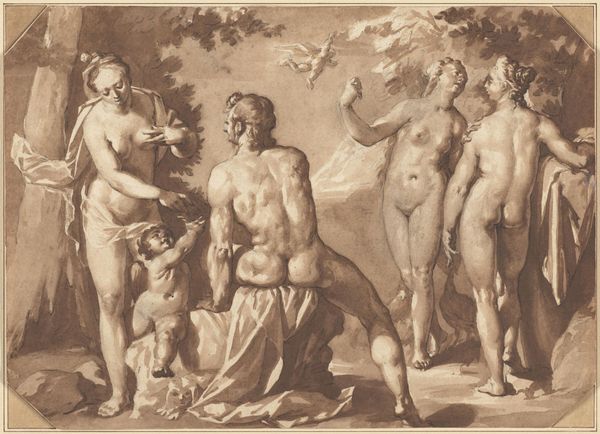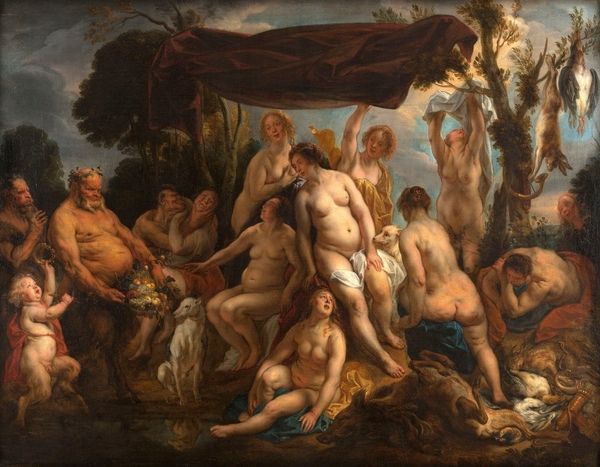
drawing, print, gouache, watercolor
#
gouache
#
drawing
#
allegory
# print
#
gouache
#
classical-realism
#
oil painting
#
watercolor
#
classicism
#
watercolour illustration
#
history-painting
#
academic-art
#
nude
Dimensions: 8-7/8 x 12-15/16 in. (22.5 x 32.8 cm)
Copyright: Public Domain
Editor: Here we have a work titled "Judgement of Paris," created sometime between 1800 and 1900. It’s currently held at the Metropolitan Museum of Art. The medium appears to be watercolor and gouache on paper. I’m struck by the somewhat muted color palette, creating almost a dreamlike quality. How do you read the composition? Curator: The formal organization immediately asserts itself. Observe how the artist orchestrates the figures into distinct groups. Notice Paris, reclined, being presented the apple. Then, the trio of goddesses, subtly arranged with an interplay of glances and gestures. Finally, we see the subtle addition on the right, where a single goddess is depicted along with elements reminiscent of landscape. What strikes you about the relationship between these distinct groupings? Editor: I notice how the artist uses drapery and posture to differentiate the figures and direct the eye. The slight twist in the central figure guides your gaze along the plane. Curator: Precisely. Semiotically, the drapery functions as a signifier, subtly delineating not only form, but also contributing to a narrative structure within the visual field. How might we interpret the somewhat ambiguous handling of space in the background? Does it flatten the pictorial depth, or does it contribute to a symbolic reading? Editor: Perhaps the somewhat hazy, undefined background, with the ambiguous suggestion of forms, adds a sense of timelessness to the allegorical scene, pushing us to focus more on the figures. Curator: A compelling proposition. The formal ambiguities, in effect, elevate the symbolic weight of the narrative itself, deflecting a literal, historicized interpretation. Are we looking at beauty or a construct, filtered through a learned gaze? Editor: I see that. The composition forces a kind of engagement, less as a record, more as a tableau. Curator: Indeed. And in doing so, opens pathways toward its deeper contemplation as pure visual expression. I will look at allegories with more curiosity going forward.
Comments
No comments
Be the first to comment and join the conversation on the ultimate creative platform.
